INDIAN SPICES
Intensify Your Culinary Creations
(Ingredient)
Concentrated Flavors, Endless Possibilities
Experience the convenience and depth of flavor with Tattva Foods & Exports' Dehydrated Spices, your secret ingredient for culinary mastery.
Intensify Your Culinary Creations
(Ingredient)
Concentrated Flavors, Endless Possibilities
Experience the convenience and depth of flavor with Tattva Foods & Exports' Dehydrated Spices, your secret ingredient for culinary mastery.
Share Now on
Quality
We ensure the best quality of our dry Spices. Preserved through meticulous dehydration, they retain essential nutrients and flavors.
Dimension
Elevate your pantry with our premium Dry Spices packaging. Experience convenience and freshness sealed in every pouch.
STORAGE
Optimize freshness and convenience with our Dry Spices storage solutions. Preserve nutrients and flavors effortlessly.
No Preservatives
Our products are free from preservatives, guaranteeing freshness and purity in every bite.
No Artificial Flavors
Say goodbye to artificial flavors. Our products are naturally delicious, with no added artificial flavors.
No Chemical Additives
We prioritize purity. Our products are free from chemical additives, ensuring wholesomeness and quality.
Mineral Water Usage
We use mineral water in our processes, ensuring purity and quality throughout our products.
Refrigerated
Our products can be conveniently stored in the refrigerator for extended freshness.
Variety of Spices Await You
Red Chilly Powder
Chili peppers (also chile, chile pepper, chilli pepper, or chilli), are varieties of the berry-fruit of plants from the genus Capsicum, which are members of the nightshade family Solanaceae, cultivated for their pungency.Chili peppers are widely used in many cuisines as a spice to add “heat” to dishes. Capsaicin and related compounds known as capsaicinoids are the substances giving chili peppers their intensity when ingested or applied topically. Other varieties of capsicum include bell peppers , but while chili peppers are pungent, bell peppers are not.
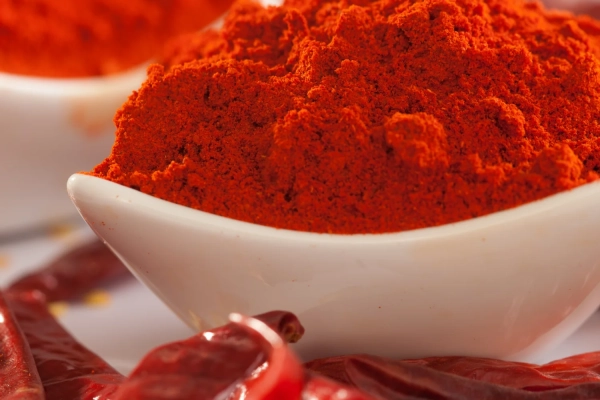
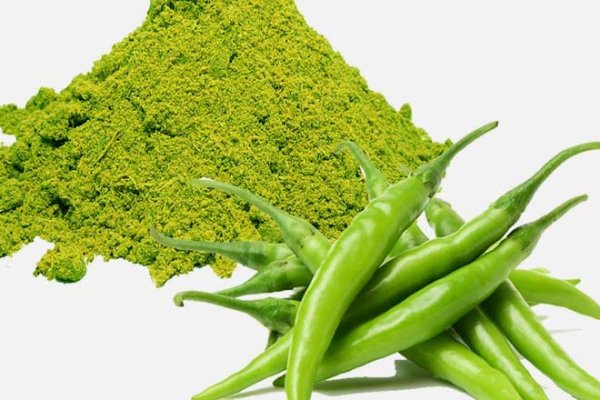
Green Chilly Powder
Green chilli powder is a spice made from dried green chillies, which belong to the Capsicum family. The chillies are used fresh or sun-dried and then ground into a fine green powder.
This powder is widely used as a flavoring and heat-enhancing agent in many Asian cuisines, especially in curries, chutneys, and marinades. It imparts a sharp, spicy kick to dishes. The vibrant green color and intense heat come from capsaicin, the primary active compound in green chillies.
Turmeric Powder
Turmeric is a flowering plant of the ginger family, Zingiberaceae, the rhizomes of which are used in cooking.
The rhizomes are used fresh or boiled in water and dried, after which they are ground into a deep orange-yellow powder commonly used as a coloring and flavoring agent in many Asian cuisines, especially for curries, as well as for dyeing, characteristics imparted by the principal turmeric constituent, curcumin.
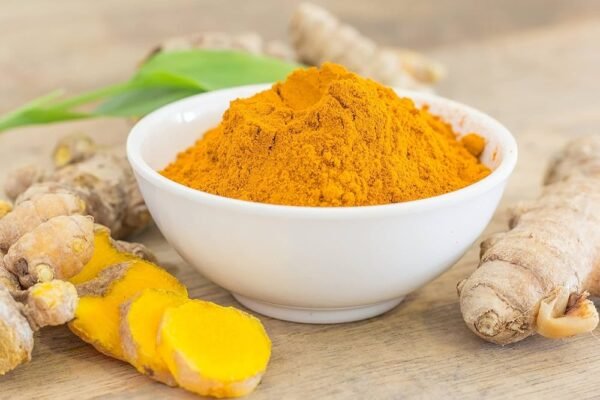
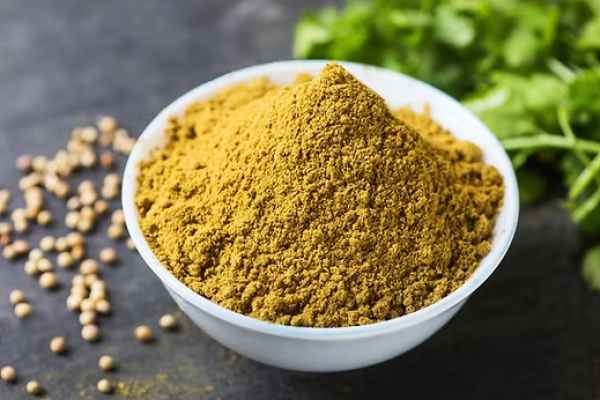
Coriander Powder
Coriander is an annual herb in the family Apiaceae. It is also known as Chinese parsley, dhania, kothmir, or cilantro. All parts of the plant are edible, but the fresh leaves and the dried seeds (which are both an herb and a spice) are the parts most traditionally used in cooking. Most people perceive coriander as having a tart, lemon/lime taste, but to nearly a quarter of those surveyed, the leaves taste like dish soap, linked to a gene that detects some specific aldehydes that are also used as odorant substances in many soaps and detergents.
Dry Fenugreek Leaves
Fenugreek is an annual plant in the family Fabaceae, with leaves consisting of three small obovate to oblong leaflets. It is cultivated worldwide as a semiarid crop. Its seeds and leaves are common ingredients in dishes from the Indian subcontinent, and have been used as a culinary ingredient since ancient times. Its use as a food ingredient in small quantities is safe.
Although sold as a dietary supplement, there is no clinical evidence that fenugreek has therapeutic properties. Commonly used in traditional medicine, fenugreek can increase the risk of serious adverse effects, including allergic reactions.
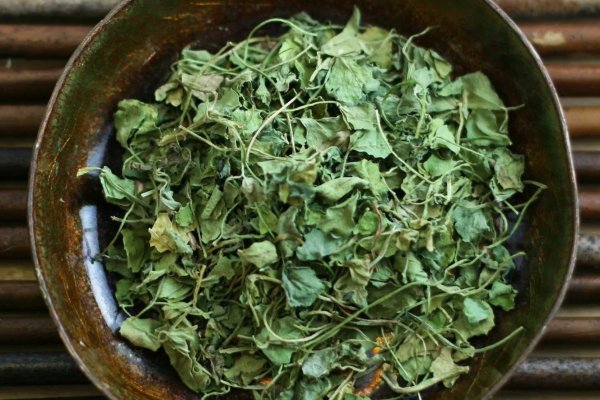
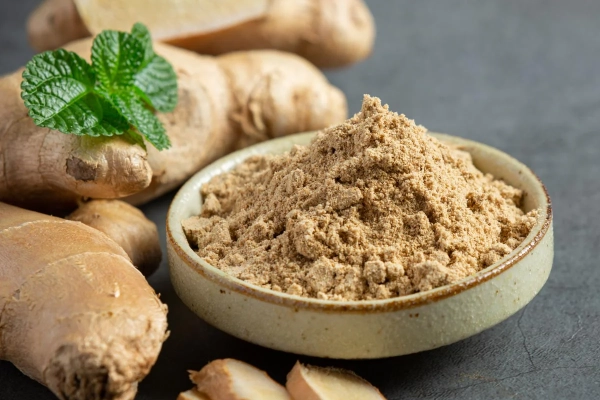
Ginger Powder
Ginger powder is a spice made from dried ginger root, which comes from the flowering plant Zingiber officinale, belonging to the ginger family. The roots, or rhizomes, are used fresh or are peeled, dried, and ground into a fine, light beige powder.
This powder is widely used as a flavoring and aromatic agent in both savory and sweet dishes across various Asian and Western cuisines. It’s especially popular in curries, teas, baked goods, and spice blends. The warm, pungent flavor and distinct aroma come from its active compound, gingerol, which also contributes to its well-known medicinal properties.
Green Cardamom
Cardamom is a spice made from the seeds of several plants in the genera Elettaria and Amomum in the family Zingiberaceae. Both genera are native to the Indian subcontinent and Indonesia. They are recognized by their small seed pods: triangular in cross-section and spindle-shaped, with a thin, papery outer shell and small, black seeds; Elettaria pods are light green and smaller, while Amomum pods are larger and dark brown.
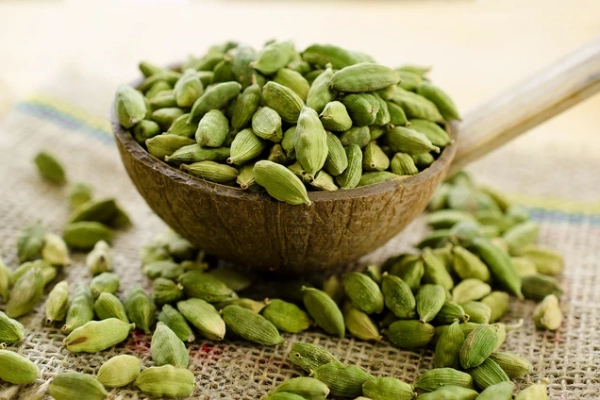
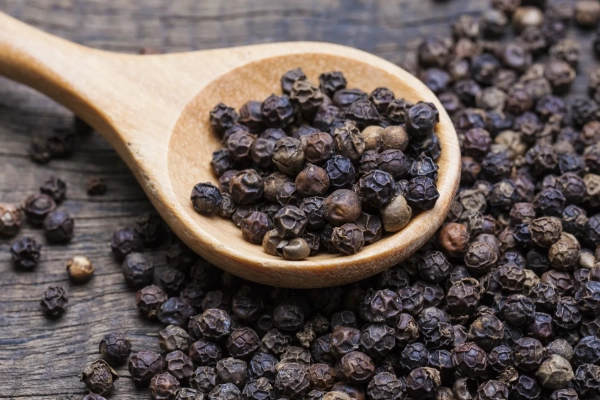
Black Pepper
Black pepper (Piper nigrum) is a flowering vine in the family Piperaceae, cultivated for its fruit, known as a peppercorn, which is usually dried and used as a spice and seasoning. The fruit is a drupe (stonefruit) which is about 5 mm (0.20 in) in diameter (fresh and fully mature), dark red, and contains a stone which encloses a single pepper seed. Peppercorns and the ground pepper derived from them may be described simply as pepper, or more precisely as black pepper (cooked and dried unripe fruit), green pepper (dried unripe fruit), or white pepper (ripe fruit seeds).
Nutmeg
Nutmeg is the seed or ground spice of several species of the genus Myristica. Myristica fragrans (fragrant nutmeg or true nutmeg) is a dark-leaved evergreen tree cultivated for two spices derived from its fruit: nutmeg, from its seed, and mace, from the seed covering. It is also a commercial source of an essential oil and nutmeg butter. The California nutmeg, Torreya californica, has a seed of similar appearance, but is not closely related to Myristica fragrans, and is not used as a spice. Indonesia is the main producer of nutmeg and mace.
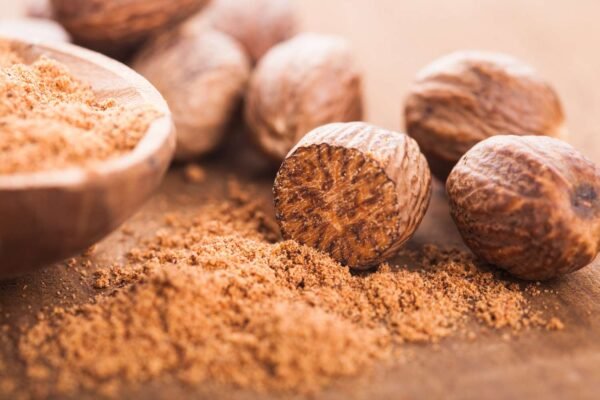
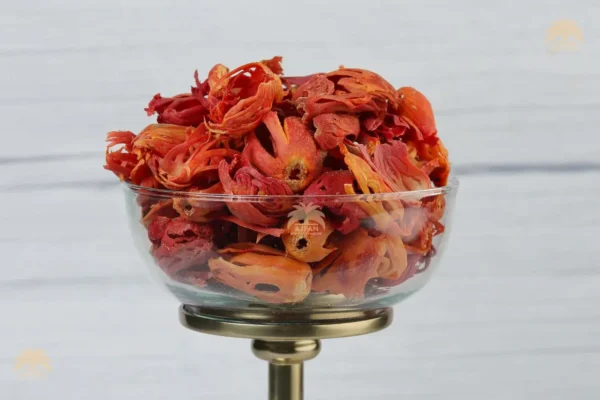
Mace (Javitri)
Javitri is a crimson red colored thread like material that envelops the nutmeg. It is spicy in taste, somewhat like a combination of pepper and cinnamon, with a strong aroma. Javitri is the net like extra seed covering that covers the Nutmeg’s seed coat. Like nutmeg, mace is typically used in baking—where those warm notes bridge the savory and sweet in rich foods like donuts, cakes, and sweet potato or pumpkin pie. Mace also adds creative complexity to meaty braises and stews.
Cinnamon stick
Cinnamon is a spice obtained from the inner bark of several tree species from the genus Cinnamomum. Cinnamon is used mainly as an aromatic condiment and flavouring additive in a wide variety of cuisines, sweet and savoury dishes, breakfast cereals, snack foods, teas, and traditional foods. The aroma and flavour of cinnamon derive from its essential oil and principal component, cinnamaldehyde, as well as numerous other constituents including eugenol.
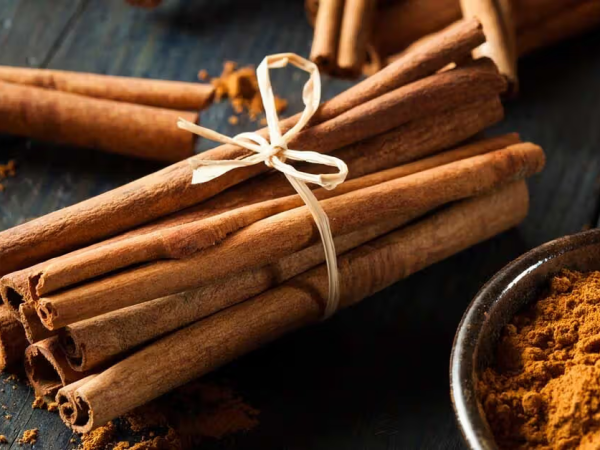
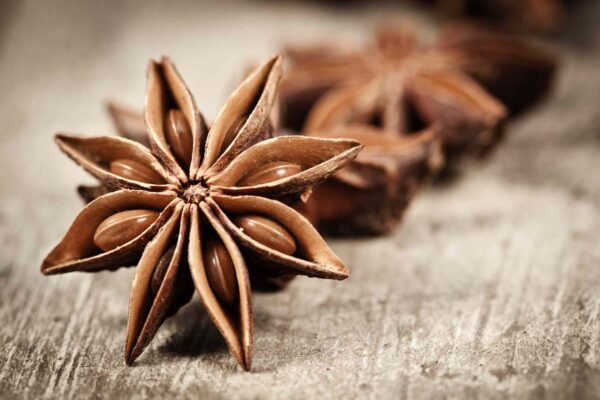
Star anise
Star anise is used in culinary applications for its distinct flavor but is also employed for its medicinal benefits. It is grown in China, Indo-China, and Japan and sometimes referred to as Chinese star anise. Star anise is a pillar ingredient in Chinese cooking; it is one of the main flavors in Chinese five-spice powder and is also used to make tea and season roast duck and other meats. In Vietnamese cuisine, star anise is part of the well-known soup, pho. In Western cultures, it is more often used to flavor liqueurs, such as absinthe, sambuca, and pastis, as well as baked goods like cookies and cakes.
Cloves
Cloves are the aromatic flower buds of a tree in the family Myrtaceae, Syzygium aromaticum. They are native to the Maluku Islands (or Moluccas) in Indonesia, and are commonly used as a spice, flavoring or fragrance in consumer products, such as toothpaste, soaps, or cosmetics. Cloves are available throughout the year owing to different harvest seasons across various countries.
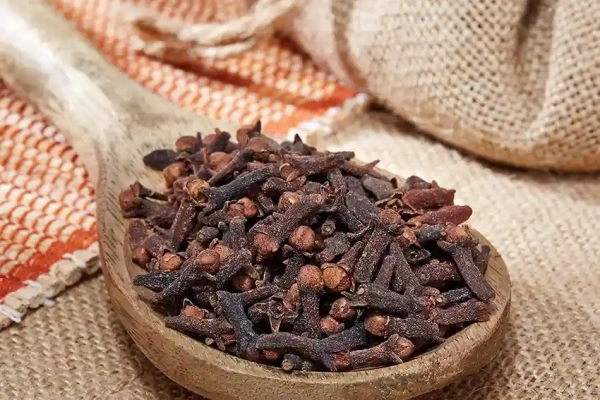
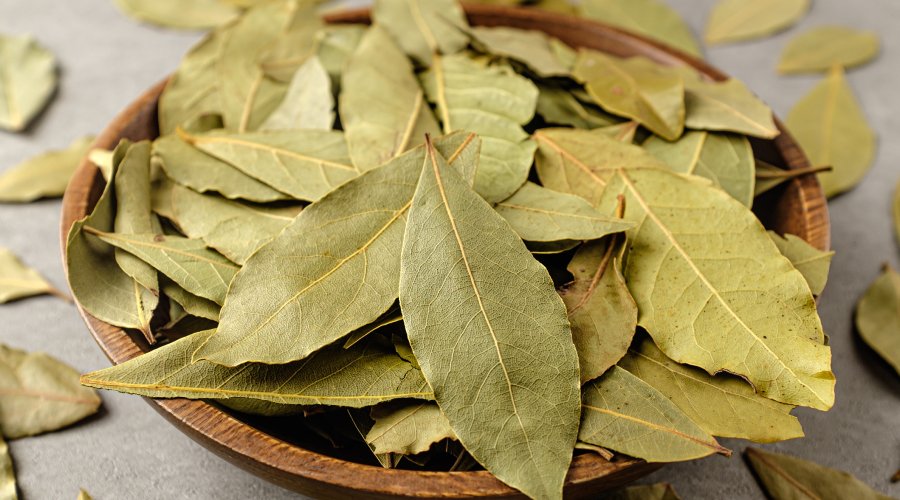
Bay leaf
The bay leaf is an aromatic leaf commonly used in cooking. It can be used whole or in a dried or ground form. Indian bay leaf or malabathrum differs from bay laurel leaves, which are shorter and light- to medium-green in colour, with one large vein down the length of the leaf. Indian bay leaves are about twice as long and wider, usually olive green in colour and have three veins running the length of the leaf. Culinarily, Indian bay leaves are quite different, having a fragrance and taste similar to cinnamon (cassia) bark, but milder.
Cumin
Cumin is a flowering plant in the family Apiaceae, native to the Irano-Turanian Region. Its seeds – each one contained within a fruit, which is dried – are used in the cuisines of many cultures in both whole and ground form. Although cumin is thought to have uses in traditional medicine, there is no high-quality evidence that it is safe or effective as a therapeutic agent.
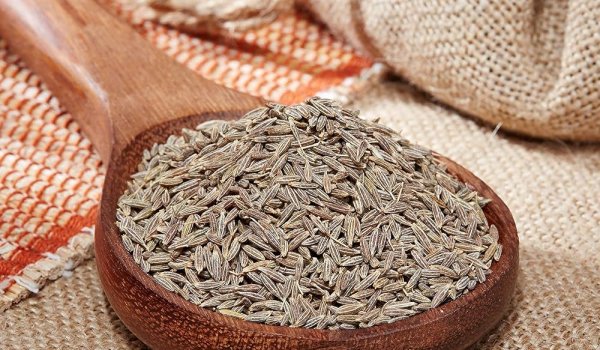
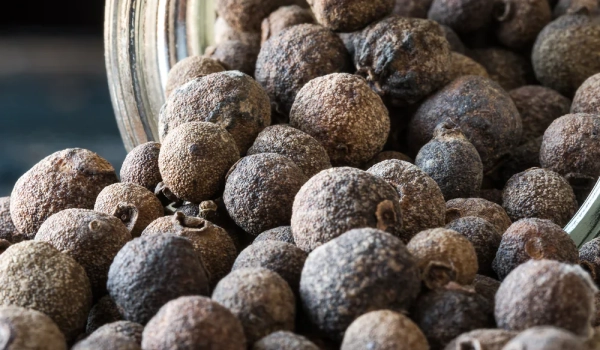
All spices(sarvasugandhi)
It has an aromatic flavour which is the combination of cinnamon, nutmeg, cloves, juniper, and peppercorn. . Pride for your Kitchen Garden. Culinary purposes leaves. Think of plucking leaves from your garden to aromatize your dishes.
Kulanjan(Alpinia galanga)
Alpinia galanga, a plant in the ginger family, bears a rhizome used largely as an herb in Unani medicine and as a spice in Arab cuisine and Southeast Asian cookery. It is one of four plants known as “galangal”, and is differentiated from the others with the common names lengkuas, greater galangal, and blue ginger.
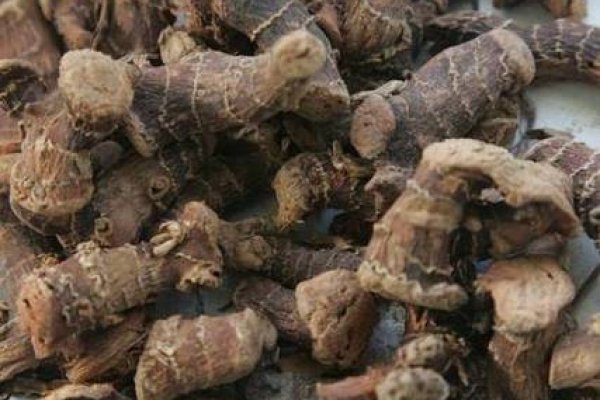

Cassia split
Cassia is an aromatic spice which appears from the inner bark of a tropical tree. When dried, it twists into quills that are utilised to add a humid, distinctive flavour and fragrance to sweet dishes such as poached fruit. It contains a stronger fragrance than whole sticks.
Also Available on








